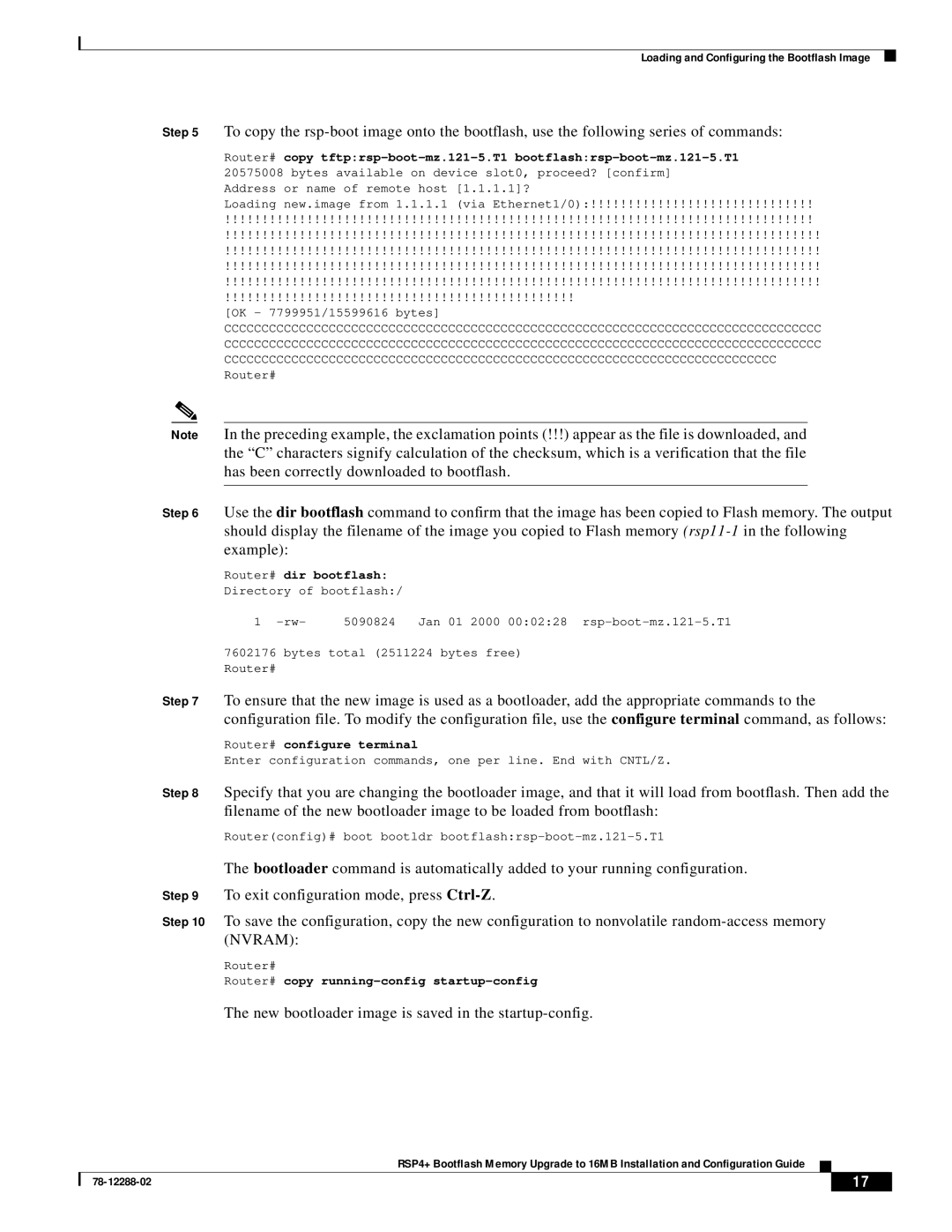MEM-16F-RSP4+= specifications
Cisco Systems has designed the MEM-16F-RSP4+ specifically to enhance the memory capabilities of its high-performance routers, such as the Cisco 7600 series. This memory module is integral to the efficient functioning of the Route Processor 4 (RSP4) by providing an additional 16 GB of DRAM. This increase in memory is critical for network operators who require enhanced performance, scalability, and faster data processing capabilities in their networks.One of the standout features of the MEM-16F-RSP4+ is its robust support for a wide range of services and applications. With the additional memory, users can support more concurrent sessions, higher traffic loads, and more complex routing policies without compromising on performance. This capability is particularly important for service providers and enterprises that rely on advanced services such as Voice over IP (VoIP), video streaming, and large-scale data storage.
The MEM-16F-RSP4+ also plays a vital role in improving the overall reliability and stability of the system. With increased memory, the router can perform more functions simultaneously, effectively handling larger tables and allowing for efficient processing of routing protocols. This not only enhances the router’s performance under heavy loads but also minimizes the risk of bottlenecks in data traffic, leading to smoother network experiences.
In terms of technologies, the MEM-16F-RSP4+ is designed to integrate seamlessly with Cisco's IOS software, ensuring compatibility with existing configurations and applications. This integration allows for quicker deployment and minimal disruption during upgrades. Additionally, the memory module is hot-swappable; network operators can replace or upgrade hardware without interrupting ongoing network operations, thus enhancing overall uptime.
The MEM-16F-RSP4+ is characterized by its reliability, which is crucial for mission-critical applications. Cisco rigorously tests its memory modules to meet specific performance metrics, ensuring that they can withstand the demanding environments typical of enterprise and service provider networks. With this high standard of testing and quality assurance, the MEM-16F-RSP4+ stands out as a preferred option for organizations aiming to future-proof their networking infrastructure.
Overall, the Cisco MEM-16F-RSP4+ memory module is an essential component for anyone utilizing the Cisco RSP4 router. Its features and capabilities contribute significantly to improved network performance and reliability, enabling organizations to meet the ever-growing demands of modern data communications and services.

